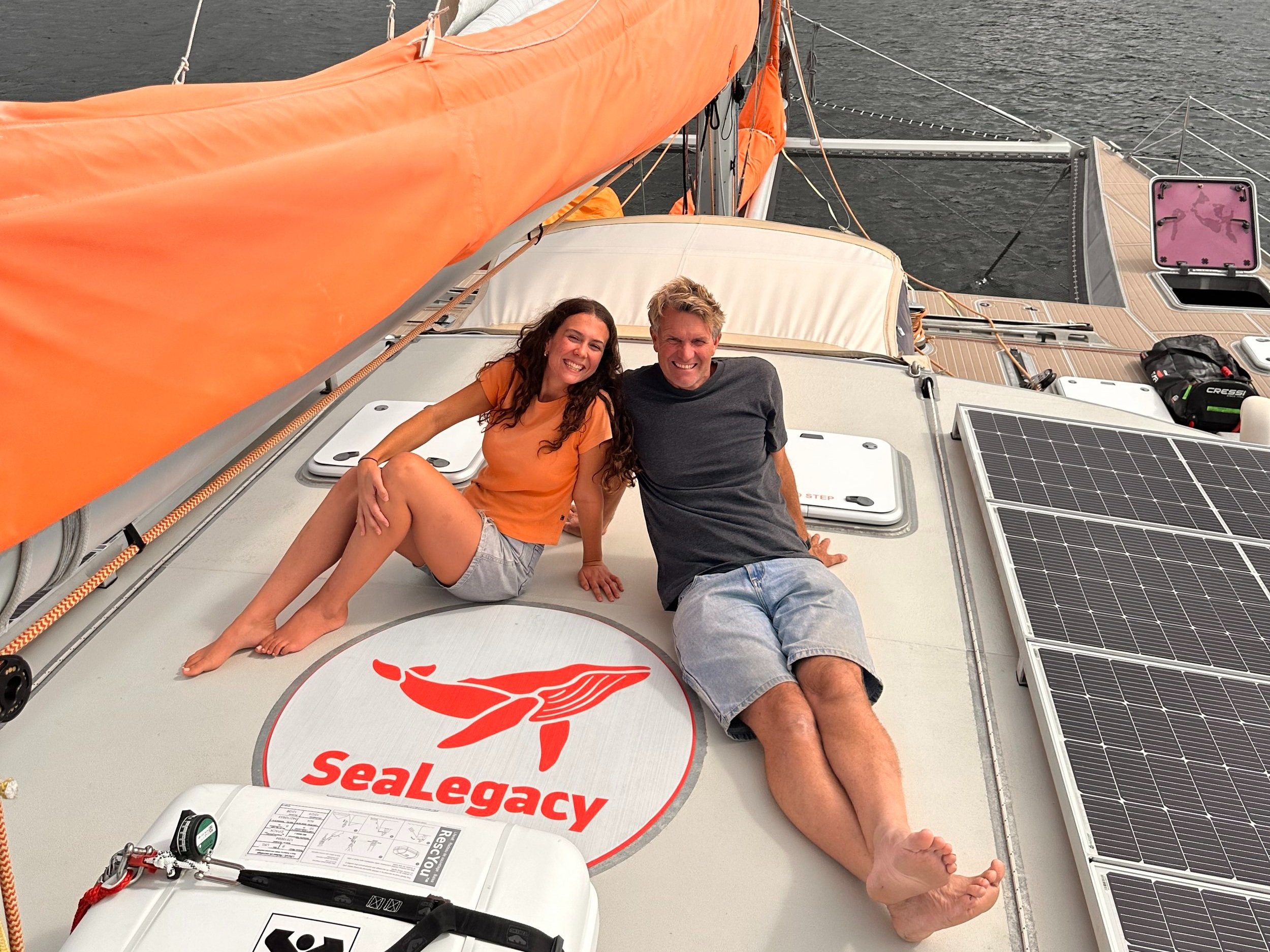Turning The Tide -Young Ocean Explorers
Local marine advocates and educators, Steve and Riley Hathaway of Young Ocean Explorers, recently teamed up with Paul Nicklen, co-founder of SeaLegacy, a global movement to save the ocean. Starring in an episode of ‘A Sea of Hope’ they highlight the natural beauty and current risks to New Zealand’s oceans. We caught up with Steve to learn more.
Tell us about your involvement in SeaLegacy's, A Sea of Hope: The Beauty and The Barrens.
Paul’s a bit of a hero of mine, and a good friend. He reached out about the project
and invited me to join the SeaLegacy vessel, both as a local guide and underwater cameraman. We spent six weeks travelling around a lot of my favourite Northland diving spots; among them Little Barrier Island, Great Barrier Island, and Goat Island.
The series, A Sea of Hope, showcases inspiring underwater stories around the world, highlighting the efforts to save our oceans. We captured stunning locations with excellent marine life, while also documenting places that have been devastated by kina barrens.
You get quite emotional in the episode. What do you want New Zealanders to understand about our oceans?
What I love about the episode is how perfectly it articulates the disparity between how we treat our land versus our ocean. As a nation we’re particularly passionate about our native species like the kea, kiwi, and kauri tree, but we’ve seriously undersold New Zealand’s story. 93% of New Zealand is ocean, with up to 80% of our native species living there; it's time we make the underwater story of New Zealand a key part of the Kiwi story.
Most people are surprised to learn that while 30% of New Zealand’s land is protected as national parks, only 0.38% of New Zealand's oceans are protected. We have a reputation of eco-tourism and environmental protection on land, but in the ocean we’re failing.
In the episode, Paul mentions the need for New Zealand to increase their percentage of marine protected areas to 30% by 2030. Can you tell us about this and how it can be achieved?
New Zealand, along with 190 other countries, has committed to achieving this goal via the 30x30 initiative, but progress is not happening. We need visionary leadership that recognises the rapid and serious degradation of our ocean and is willing to act. In my short lifetime I've witnessed scallops, pipis and cockles disappearing, crayfish becoming functionally extinct in the Gulf, a huge increase in kina barrens, and invasive species like Caulerpa and Mediterranean fanworm taking over areas. We have a growing population and we must stop thinking that things will improve if we keep doing the same thing.
While marine reserves, or ‘wet libraries’, alone aren't the solution, they are a crucial place where life can flourish. I believe every child in Aotearoa, no matter where they live, should have access to a place that offers a glimpse of what our untouched oceans were like. The ocean is resilient, if left alone it will recover, but we must prioritise the needs of future generations over our needs and wants now.
What can we do, and what are Young Ocean Explorers doing to work towards this goal?
The underwater world of New Zealand is our great untold story. To work towards protecting it, we need to educate ourselves, snorkel in both protected and non-protected areas to see the difference firsthand, speak to our local MPs, and support campaigns led by groups that are making a difference.
Young Ocean Explorers plan to present a campaign to the Prime Minister next year, amplifying the voices of children in New Zealand who want a better future for the ocean. Our mission is to ensure that future generations truly value the ocean, making a difference through generational change.
Young Ocean Explorers is a charitable trust that was formed to connect the next generation of kids with the ocean. To support their mission and to watch A Sea of Hope: The Beauty and The Barrens visit their website.
